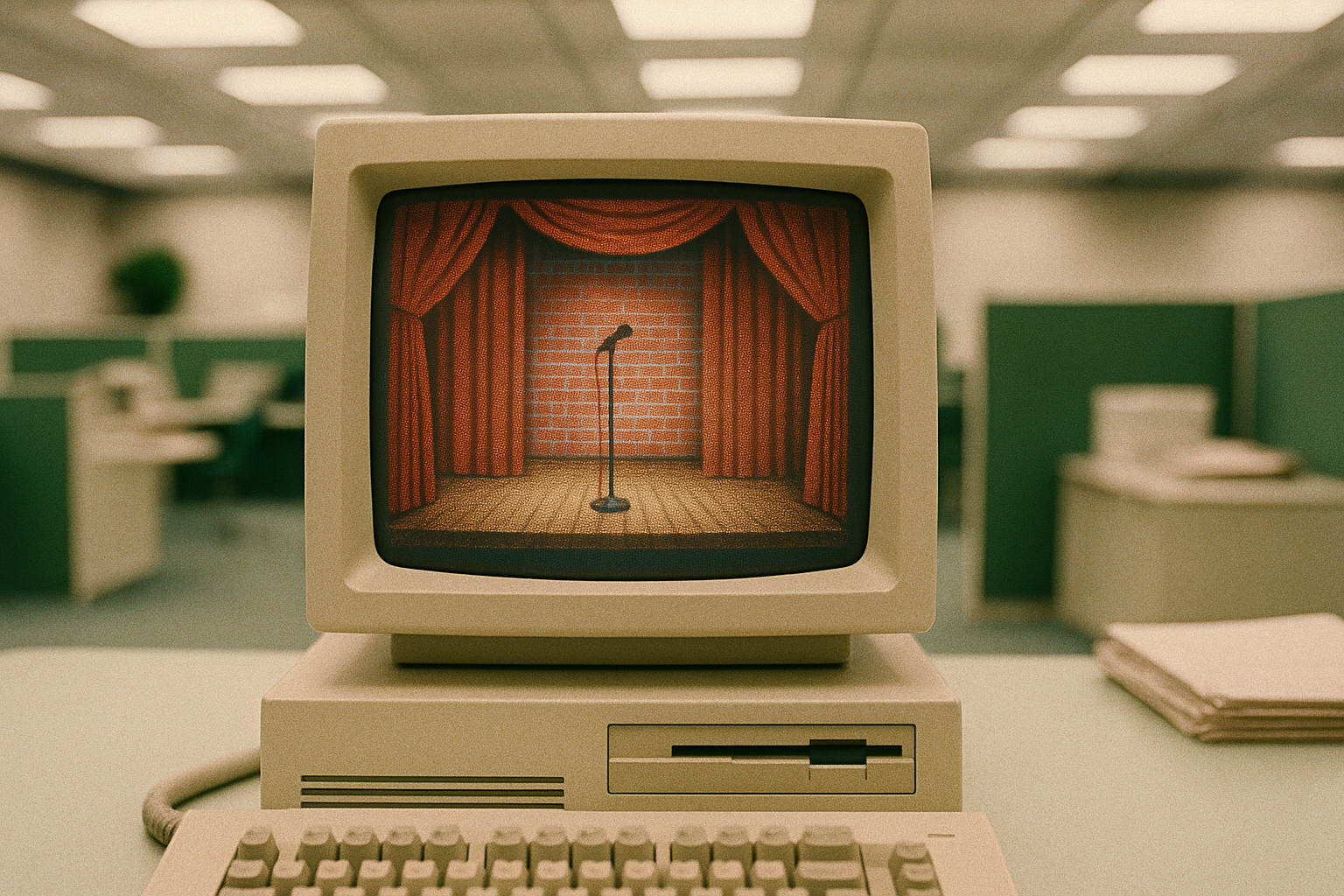What started as just making silly content about programmers turned into something bigger. I’d write something that made people laugh, then try to improve it – add technical accuracy, clarify the setup, explain the context better. And every single time, the humor evaporated.
Here’s the thing: I’m documenting what I’m learning about comedy writing as I go. Not because I’m an expert (I’m definitely not), but because the patterns are fascinating and nobody seems to write about the mechanics of programmer humor specifically.
The Problem: Why Editing Kills Jokes
The pattern was consistent: initial drafts generated laughs, but editing for accuracy or clarity removed the humor. The more technically correct or well-explained something became, the less funny it was.
This suggested comedy operates on different principles than technical writing. Precision and clarity – normally virtues – were somehow antithetical to humor. But why?
Core Discovery: Character Flaws Drive Comedy
Looking at Silicon Valley, The IT Crowd, even classic Dilbert strips, the pattern becomes clear. Comedy doesn’t come from situations or references – it comes from character flaws interacting with those situations.
Here’s the three-component framework that keeps showing up:
- Obsession: What the character cares about disproportionately
- Blind spot: What they cannot or will not see about themselves
- Coping mechanism: How they make situations worse while trying to make them better
Every memorable tech comedy character has this trinity. Gilfoyle’s condescension, Roy’s laziness, Dwight’s power hunger – they’re all built on this structure.
Example: Building a WordPress Developer Character
Here’s where it clicked for me. Initial attempt:
“This is bad code,” Kevin said. “But it works!”
This lands with a thud. It’s just a statement hanging in space. No character, no comedy.
Applying the framework:
- Obsession: His old code still functioning
- Blind spot: How his methods torture everyone else
- Coping mechanism: Adding more globals when challenged
Result:
“I’ve been securing WordPress sites since 2014.” Kevin’s typing resumed, aggressive. “Security fundamentals don’t change.”
“Since WordPress 3.8,” Paradox couldn’t help adding. “A lot has changed.”
Now there’s friction. The comedy emerges from Kevin’s inability to see what everyone else sees. His coping mechanism (aggressive typing, dismissing modern approaches) escalates the conflict rather than resolving it. You can feel his defensiveness through the keyboard.
Pattern Analysis: Tech Character Archetypes
If you’ve worked in tech, you’ve met these people. Hell, you’ve probably been one of these people at some point:
The Legacy Code Defender
- Obsession: Protecting their old code
- Blind spot: Technical debt they’ve created
- Coping mechanism: Historical revisionism about why decisions were made
“You don’t understand – in 2015, this was the ONLY way to handle user authentication!”
The Over-Engineer
- Obsession: Architectural purity
- Blind spot: Business needs and deadlines
- Coping mechanism: Adding abstraction layers to “simplify”
“Sure, it’s just a contact form, but what if we need to scale to millions of submissions per second?”
The Bleeding Edge Adopter
- Obsession: Using the newest technology
- Blind spot: Stability and team knowledge
- Coping mechanism: Rewriting everything in the latest framework
“I know we just migrated to React, but have you seen this new framework that came out yesterday?”
Mechanical Breakdown: Why This Works
Put a Legacy Code Defender and a Bleeding Edge Adopter in the same code review, and watch the fireworks. The comedy writes itself because their obsessions directly conflict. Neither can see their own blind spot, and their coping mechanisms escalate rather than resolve tensions.
This is more sustainable than situational humor because:
- Character flaws generate infinite situations
- Consistency makes characters predictable yet surprising
- Readers recognize these archetypes from real life
The recognition is key – we laugh because we’ve sat in that meeting, we’ve had that argument, we’ve been that person insisting our approach is the only sane one.
Application: From Concept to Scene
Here’s where the framework pays off. Starting with just “developers arguing about code” yields generic dialogue that could happen anywhere. But establishing character flaws first changes everything:
Gabriel (The Perfectionist Streamer):
- Obsession: Clean, educational code
- Blind spot: Nobody learns from 3-hour refactoring streams
- Coping mechanism: Making code even more “educational”
Brendan (The Pragmatic Shipper):
- Obsession: Shipping features on time
- Blind spot: Technical debt accumulation
- Coping mechanism: “Temporary” fixes that become permanent
Their conflict becomes inevitable and specific. Gabriel will try to refactor Brendan’s quick fixes during a live stream, while Brendan needs to ship before the deadline. Both believe they’re helping. Neither can see why the other is frustrated.
The beauty is you don’t need to force the conflict – the character flaws create it naturally.
Observed Results
Working on the Paradox series taught me this: scenes built on character flaws are consistently better than those built on situations or technical jokes. A quantum physics joke might get a smile, but Jordan realizing they’ve been calculating in the wrong dimension while insisting everyone else is wrong? That generates actual laughter.
The pattern holds across different comedy formats – from Silicon Valley’s ensemble cast to The IT Crowd’s more focused character studies. The specificity of the flaw determines the quality of the comedy.
The flaws stick in memory because we recognize them.

Leave a Reply